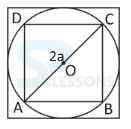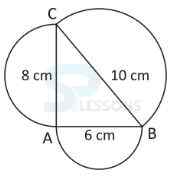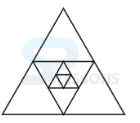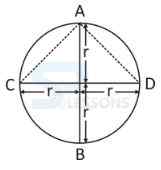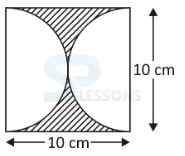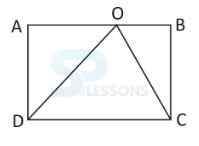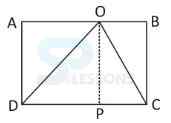 Introduction
Introduction
Mensuration is a topic in Geometry which is a branch of mathematics. Mensuration deals with length, area, and volume of different kinds of shape- both 2D and 3D. The article IBPS RRB Mensuration Quiz 2 provides information about Mensuration, an important topic of Mathematics Consists of different types of Mensuration questions with solutions useful for candidates preparing for different competitive examinations like IBPS RRB, RRB ALP/Technical Exams/Junior Engineer Recruitment Exams, SSC CGL, SSC CHSL, IBPS, SBI PO, SBI Clerks, CAT and etc.
 Quiz
Quiz
1. The area of a sector of a circle of radius 36 cm is 72π[latex]{cm}^{2}[/latex]. The length of the corresponding arc of the sector is
-
A. π cm
B. 2π cm
C. 3π cm
D. 4π cm
-
A. [latex]{a}^{2}[/latex]
B. 2[latex]{a}^{2}[/latex]
C. 3[latex]{a}^{2}[/latex]
D. 4[latex]{a}^{2}[/latex]
-
A. 48 [latex]{cm}^{2}[/latex]
B. 32 [latex]{cm}^{2}[/latex]
C. 0
D. None of these
-
A. 2 units
B. 3 units
C. 6 units
D. infinity
-
A. [latex]\frac{π}{2}[/latex]
B. π
C.[latex]\frac{π}{4}[/latex]
D. 2π
1. The area of an isosceles ΔABC with AB = AC and altitude AD = 3 cm is 12 sq cm. What is its perimeter ?
-
A. 18 cm
B. 16 cm
C. 14 cm
D. 12 cm
-
A. 17.5 [latex]{cm}^{2}[/latex]
B. 18.5 [latex]{cm}^{2}[/latex]
C. 20.5 [latex]{cm}^{2}[/latex]
D. 21.5 [latex]{cm}^{2}[/latex]
-
A. 52 [latex]{cm}^{2}[/latex]
B. 56 [latex]{cm}^{2}[/latex]
C. 60 [latex]{cm}^{2}[/latex]
D. 64 [latex]{cm}^{2}[/latex]
-
A. 12.56 [latex]{cm}^{2}[/latex]
B. 14.56 [latex]{cm}^{2}[/latex]
C. 16.76 [latex]{cm}^{2}[/latex]
D. 22.56 [latex]{cm}^{2}[/latex]
-
A. 40 [latex]{cm}^{2}[/latex]
B. 45 [latex]{cm}^{2}[/latex]
C. 50 [latex]{cm}^{2}[/latex]
D. 80 [latex]{cm}^{2}[/latex]
1. A piece of wire 78 cm long is bent in the form of an isosceles triangle. If the 1. ratio of one of the equal sides to the base is 5 : 3, then what is the length of the base?
-
A. 16 cm
B. 18 cm
C. 20 cm
D. 30 cm
-
A. 88.78
B. 84.78
C. 67.74
D. 57.78
-
A. 18 cm
B. 14 cm
C. 12 cm
D. 8 cm
-
A. √3 sq cm
B. 2√3 sq cm
C. 3√3 sq cm
D. 4√3 sq cm
-
A. 48π sq cm
B. 50π sq cm
C. 100π sq cm
D. 200π sq cm






